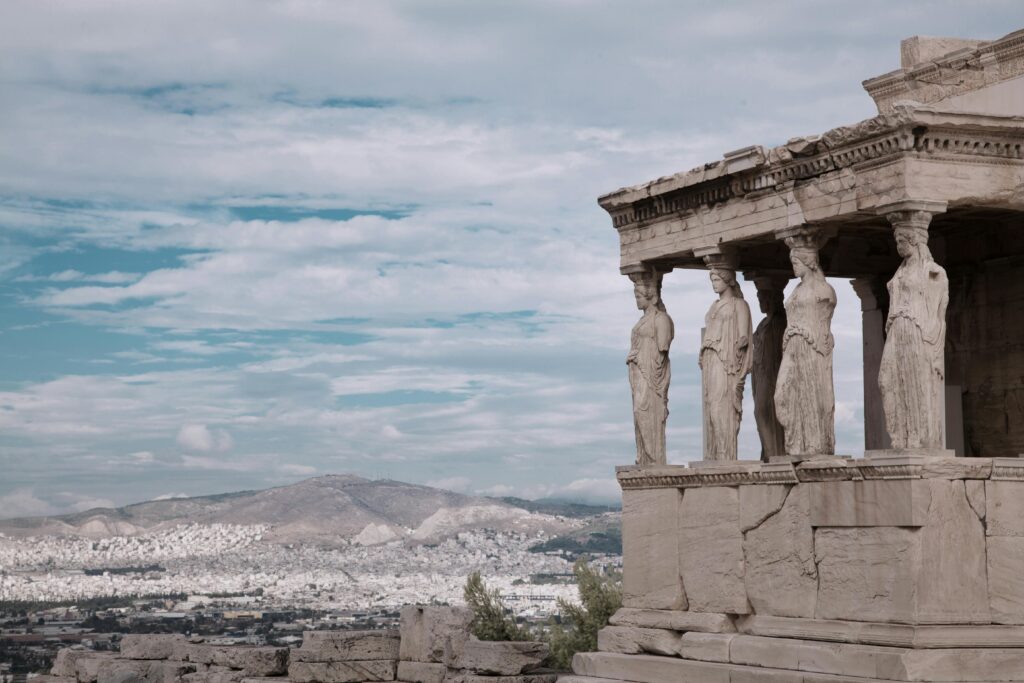Ancient Legends Across Cultures:
Mythology has been an essential part of human culture across the globe. Each society, from the ancient Greeks to the Mayans, developed its myths to explain the mysteries of the universe, life, death, and the forces that govern existence. While these tales vary widely, common threads and universal themes often appear, highlighting both the shared humanity and cultural distinctiveness across civilizations. Let’s dive into some of the most intriguing myths. Exploring the realities that may lie behind them and the cultural values they reveal with Historic Horizons.
1. What Are Myths? The Purpose Behind the Legends
Myths serve a multifaceted purpose in society. They often provide explanations for natural phenomena, offer lessons in morality, and establish societal norms. A myth is more than just a story; it’s a lens into the worldview and values of the culture that produced it. Myths have been used to answer questions beyond the reach of early scientific understanding, explaining everything from the creation of the world to the origins of humanity and the cycles of life and death.
Key Functions of Myths:
- Explanatory Role: Myths explain natural events, such as thunderstorms or earthquakes, as acts of the gods.
- Moral and Ethical Lessons: Myths like Aesop’s fables teach societal morals.
- Cultural Identity and Continuity: Myths reinforce cultural values, helping preserve traditions and unify societies.
2. Creation Myths: Common Threads in Origins
Across diverse cultures, many myths address the origin of the world and humankind. Despite geographical separation, these creation stories share several common themes: primeval chaos, a divine act or cosmic event, and the emergence of life from the void.
Examples of Creation Myths:
- The Greek Cosmogony: According to Greek myth, the universe began with Chaos, from which the gods and all of creation sprang. Gaia (Earth) and Uranus (Sky) emerged, forming the foundation of the cosmos.
- The Norse Yggdrasil and the Nine Worlds: Norse mythology centers around Yggdrasil, the great tree connecting nine worlds. From fire and ice came Ymir, the first being, whose body was used to create the world.
- The Hindu Trimurti and Cosmic Egg: In Hindu mythology, the world began from a cosmic egg, with the gods Brahma, Vishnu, and Shiva playing integral roles in creation, preservation, and destruction.
Reality Behind Creation Myths:
Many creation myths could be seen as humanity’s attempt to explain concepts beyond early scientific understanding. The Big Bang theory or evolutionary biology provides scientific frameworks that these myths symbolically parallel. Their similarities reflect humanity’s desire to seek meaning in the origins of existence, suggesting that these ancient peoples perceived themselves as part of something greater than their immediate experience.
3. Heroes and Monsters: The Battle Between Good and Evil
Myths are filled with heroic figures who face monstrous beings or evil entities. These myths are often allegories, portraying the triumph of good over evil, courage over fear, and order over chaos. Heroes in myths serve as cultural icons embodying the values a society admires.
Examples of Heroic Myths:
- Hercules and the Twelve Labors: In Greek mythology, Hercules is a hero who, despite his flaws, becomes a symbol of strength and perseverance by facing various monsters.
- Beowulf and Grendel: In this Norse legend, the hero Beowulf battles the monstrous Grendel, symbolizing the fight against forces that threaten societal stability.
- The Epic of Gilgamesh: One of the earliest known myths, this Mesopotamian story follows Gilgamesh’s journey to conquer death, confronting both physical and spiritual monsters.
Reality Behind Hero Myths:
While these stories are fantastical, they reflect human struggles and the universal desire for justice and heroism. Many ancient societies valued physical strength and bravery, often necessary for survival. Heroic myths likely inspired real individuals to act courageously, reinforcing societal ideals of loyalty, bravery, and the importance of facing adversity.
4. The Afterlife: Visions of What Comes Next
Another common thread among myths is the concept of the afterlife, with beliefs varying greatly from culture to culture. These myths provide comfort in the face of death and offer guidance on how to live a virtuous life.
Examples of Afterlife Myths:
- The Egyptian Duat: In Egyptian mythology, the soul passes through the Duat (underworld) where it is judged by Osiris. A pure heart allows entry into the Field of Reeds, a paradise.
- The Greek Hades and Elysium: The Greek afterlife is divided into realms such as Tartarus for the wicked and Elysium for the righteous, reflecting their belief in moral retribution.
- The Aztec Mictlan: The Aztecs believed that the dead traveled through nine levels of Mictlan before reaching their final resting place, with trials symbolizing life’s challenges.
Reality Behind Afterlife Myths:
These myths often mirror the fears and values of their cultures. For example, the Egyptian emphasis on moral purity reflects their high regard for order (ma’at). Modern psychology shows that afterlife beliefs often help individuals cope with loss and bring structure to the concept of morality, echoing the ancient function of these myths.
5. Nature Myths: Understanding the Natural World
Nature myths help explain the environmental phenomena that ancient societies observed but couldn’t scientifically explain. Stories often involved gods and spirits controlling elements like the sun, rain, and harvests, which were crucial to survival.
Examples of Nature Myths:
- The Japanese Sun Goddess Amaterasu: Japanese mythology tells of the sun goddess Amaterasu, whose actions impact sunlight, weather, and crop success.
- The Greek Demeter and Persephone: This myth explains the seasons. Persephone’s time in the underworld corresponds with winter, while her return signifies spring.
- The Inuit Sea Goddess Sedna: The Inuit believe Sedna controls the sea’s bounty. To secure food, shamans appeal to Sedna, reflecting the dependency of the Inuit on marine resources.
Reality Behind Nature Myths:
Nature myths reveal how closely ancient cultures were tied to their environment. Seasonal changes and natural phenomena had direct impacts on survival. By personifying natural elements, these societies found a way to feel connected to, and gain some perceived control over, their world.
6. Commonalities and Differences Across Cultures
While myths vary widely, they reflect the universal human desire to explain, understand, and find meaning in life. Common themes, like creation, heroism, and the afterlife, appear repeatedly, suggesting that human needs and questions are universal, though cultures respond differently based on their environment and values.
Examples of Cross-Cultural Themes:
- Cosmic Order vs. Chaos: Many cultures feature stories of gods bringing order from chaos (e.g., Egyptian and Mesopotamian myths).
- Human Fallibility and Redemption: Myths of flawed gods and heroes teach forgiveness and humility, showing humanity as a balance of strengths and weaknesses.
7. The Enduring Influence of Myth in Modern Culture
Myths have evolved but remain relevant in today’s literature, cinema, and art. Modern media frequently reimagines mythological stories, drawing from their timeless appeal. Superhero movies, for example, are often inspired by ancient heroes, while sci-fi narratives explore cosmic origins reminiscent of creation myths.
Examples of Myth’s Impact Today:
- Movies like “Percy Jackson” and “Thor” draw directly from Greek and Norse myths.
- The Matrix Series borrows themes of cosmic order, enlightenment, and prophecy.
- Superhero Narratives echo the classic hero’s journey found in myths worldwide.
Myths and legends persist because they touch on the questions that lie at the heart of human existence. These tales are more than just stories; they’re reflections of who we are, what we value, and the mysteries we continue to ponder.

